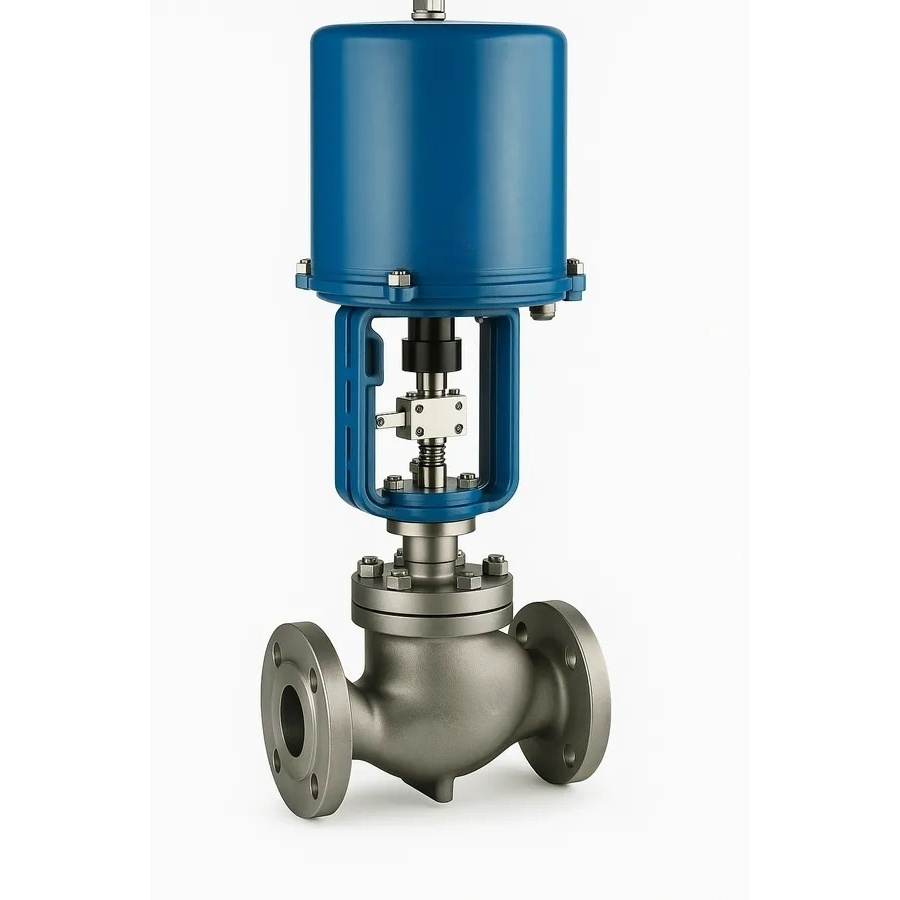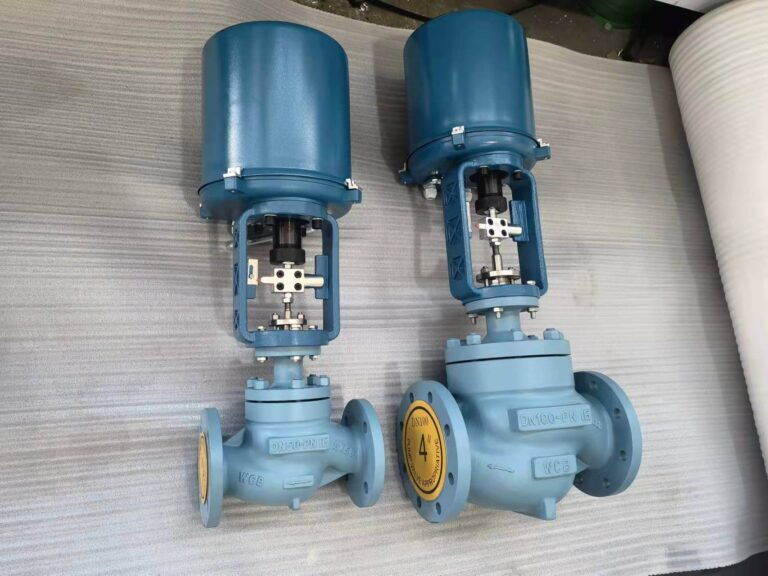
In today’s rapidly evolving industrial landscape, improving energy efficiency has become paramount for businesses across all sectors. Whether it is a chemical plant, commercial building, power station, or municipal water treatment facility, reducing waste and optimizing control processes directly translates to cost savings and environmental benefits. One key component driving this progress is the motorized globe valve. These automated flow-control devices play a significant role in managing heating and cooling, controlling process fluids, and enhancing system responsiveness.
Motorized globe valves combine the classic precision throttling performance of a globe valve with the automation advantages of an electric actuator. But how exactly do they contribute to energy efficiency? What working principles allow them to save electricity, water, steam, or compressed air in complex systems? This article explores these questions by providing an in-depth overview of motorized globe control valves, their mechanism, applications, selection criteria, and maintenance practices, while highlighting how they can significantly improve energy efficiency in industrial and commercial applications.

A motorized valve is a type of control valve fitted with an electric actuator, allowing it to be opened, closed, or modulated automatically based on control signals. This stands in sharp contrast to traditional manual valves, which require human intervention to adjust flow. The motorized actuator receives an electrical signal—often from a building management system, PLC, or DCS—and converts that signal into mechanical motion. This motion then drives the valve stem to move the valve plug (or disc), thereby regulating the flow of liquid or gas passing through the pipeline.
At the heart of the system is the electric actuator. When a control signal (such as 4–20mA, 0–10V, or digital control pulses) is sent, the actuator’s internal motor rotates or drives a gear mechanism. This rotational motion is transformed into linear thrust that moves the valve stem up or down (in the case of a globe valve). The precise positioning of the valve stem allows the operator or control system to finely modulate the flow rate. Most modern electric actuators are equipped with position sensors, feedback modules, and limit switches so that the controller always knows the exact position of the valve.
The advantages of motorized valves are clear:
Remote and automatic control, reducing manual labor;
Accurate modulation, supporting energy-efficient control strategies;
Improved safety, as valve operation can be automated in response to alarms;
Repeatability, ensuring consistent flow control over long periods.
The globe valve is a linear motion valve, designed primarily for throttling and precise control. Its characteristic S-shaped flow path enables accurate modulation, but at the cost of higher pressure drop compared to ball or butterfly valves. When this valve is fitted with a motorized electric actuator, it becomes a powerful automated control solution for multiple process conditions.
Here’s how a motorized globe valve operates:
The electric actuator receives the control command, translates it into torque, and applies that force to the valve stem.
The stem moves vertically, pressing the valve disc toward or away from the valve seat.
This linear motion allows gradual throttling of the flow path.
Because the valve only allows medium to flow in one direction (from inlet to outlet), installation orientation is crucial.
This precise, linear regulation is why motorized globe valves are favored for modulating service in HVAC systems, process steam lines, chilled water control, and other continuous adjustment applications.
Motorized globe valves can significantly enhance energy efficiency in multiple ways:
Manual valves often result in over-opened or under-opened valves, wasting energy in the form of extra fuel for heating or pumping power for chilled water. Motorized globe valves allow extremely precise throttling of flow—all controlled automatically—so systems maintain optimal flow levels. This avoids unnecessary energy consumption.
In HVAC systems, accurate control of hot and chilled water ensures that the central boiler or chiller operates within its most efficient range. The motorized valves help maintain stable temperatures and reduce overheating or overcooling, minimizing wasted heat or electricity.
Because the actuator can send position feedback, the control system can continuously optimize operations. For example, if flow demand decreases at night, the valve can throttle down automatically to save energy without compromising comfort or production.
Manual operation is prone to mistakes, such as leaving a valve partially open or forgetting to readjust it during process changes. By automating these functions, motorized globe valves eliminate such inefficiencies.
Motorized globe valves are now a core component in many energy-efficient systems:
They regulate chilled water or hot water in heating and cooling loops. By modulating the flow based on room temperature sensors, they maintain comfortable indoor climates while lowering energy consumption.
Many factories use motorized globe valves to control the flow of process fluid in chemical reactors, cooling towers, mixing systems, and compressor lines. Their ability to handle constant modulation ensures stable production quality and lower energy waste.
In steam distribution or boiler feedwater systems, motorized globe valves help optimize steam flow to turbines, improving plant efficiency and reducing fuel use.
They regulate flow in filtration systems, desalination plants, and cooling water circuits, helping pumps operate more efficiently.
To maximize energy savings, it’s crucial to select the correct valve model and actuator combination. Consider the following:
|
Selection Parameter |
Description |
|
Valve Size |
Ensure valve Cv or flow coefficient matches actual flow needs. Oversized valves cause control instability and energy waste. |
|
Actuator Voltage |
Match actuator voltage with site power supply (e.g., 24V AC, 110V AC, 220V AC). |
|
Material |
Use stainless steel or special alloys for corrosive media, and cast iron or bronze for standard water systems. |
|
Control Signal |
Choose actuator compatible with signal used by control system (e.g., PI control, 4–20mA). |
|
Feedback |
Use actuators with position feedback for closed-loop control enhancing energy savings. |
To ensure motorized globe valves operate efficiently and maintain long-term reliability, routine maintenance is essential. Proper upkeep not only extends the service life of the equipment but also enhances system stability and minimizes unnecessary energy consumption. Below are practical maintenance recommendations to keep your valves performing at their best.
Regular lubrication of the valve stem and moving components ensures smooth and responsive actuation. A dry or poorly lubricated stem can result in sluggish movement, delayed responses, or even sudden sticking during operation. Periodically inspect the valve body for dust, rust, or wear, and confirm that travel is smooth across the full range.
Over time, the valve’s sealing components—such as packing and seats—can degrade due to pressure, temperature fluctuations, or corrosion. Worn seals often result in internal leakage or external dripping, forcing pumps or boilers to work harder to maintain stable output, which increases energy consumption. Scheduled replacement of seals helps maintain tight shut-off and improves operational efficiency.
The electric actuator should be tested periodically to validate response time, stroke accuracy, and signal sensitivity. Calibration ensures that the control valve responds correctly to the 4–20mA or 0–10V input signals, preventing control errors and optimizing flow regulation
Loose or corroded cable joints can lead to signal loss, actuator overheating, or voltage drops. Inspect electrical connections for signs of wear or oxidation, and tighten terminals as necessary to maintain stable performance and prevent power loss.
In addition to individual checks, implement a preventive maintenance plan with scheduled inspections. Keeping detailed records allows operators to identify trends and replace components before failure occurs.
By following these maintenance guidelines, operators can significantly enhance energy efficiency, minimize downtime, and maximize the service life of motorized globe valves in any system.
In modern smart factories and intelligent buildings, motorized globe valves are often networked via Modbus, BACnet, or other communication protocols. This integration allows data logging, machine learning optimization, predictive maintenance, and adaptive control strategies that further reduce energy consumption.
For example:
Machine learning models can analyze flow data to adjust valve positions for optimal equipment efficiency.
Predictive maintenance reduces the risk of sudden valve failure, avoiding downtime and wasted energy.
Motorized globe valves represent an essential component of energy-efficient industrial control and building automation. By providing precise adjustment of fluid flow, allowing remote automatic operation, and integrating with smart control systems, they drastically reduce energy waste in HVAC, process, and utility systems.
The long-term benefits include lower operational costs, reduced greenhouse gas emissions, improved system stability, and a higher level of safety. For any plant or facility pursuing sustainability goals or ISO 50001 energy management standards, integrating motorized globe valves with intelligent controls is a key step forward.